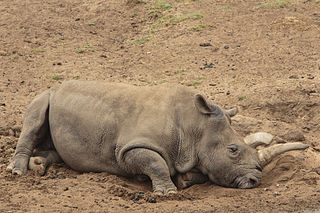 W
WAbada (or Bada or Ibada, was the name given to a female Indian rhinoceros kept by the Portuguese kings Sebastian I and Henry I from 1577 to 1580 and by Philip II of Spain from about 1580 to 1588. She was the first rhinoceros seen in Europe since the one sent as a present from the King of Portugal, Manuel I, to Pope Leo X in 1515, who died in a shipwreck off the coast of Italy in early 1516, immortalised as Dürer's Rhinoceros.
 W
WAngalifu was a captive northern white rhinoceros held at the San Diego Zoo Safari Park. At the time of his death, he was one of six living northern white rhinoceroses in the world, one of two living males in the world, and the only male on the American continents. He was outlived by male Sudan and females Najin and Fatu.
 W
WCacareco (1954-1962) was a female black rhinoceros exhibited in Brazilian zoos. She is known for receiving many votes in the 1958 São Paulo city council elections as a form of protest vote. Electoral officials did not accept Cacareco's candidacy, but she eventually won 100,000 votes, more than any other party in that same election. The term "voto Cacareco" is commonly used to describe protest votes in Brazil.
 W
WClara the rhinoceros was a female Indian rhinoceros who became famous during 17 years of touring Europe in the mid-18th century. She arrived in Europe in Rotterdam in 1741, becoming the fifth living rhinoceros to be seen in Europe in modern times since Dürer's Rhinoceros in 1515. After tours through towns in the Dutch Republic, the Holy Roman Empire, Switzerland, the Polish–Lithuanian Commonwealth, France, the Kingdom of the Two Sicilies, the Papal States, Bohemia and Denmark, she died in Lambeth, England.
 W
WDürer's Rhinoceros is the name commonly given to a woodcut executed by German painter and printmaker Albrecht Dürer in 1515. The image is based on a written description and brief sketch by an unknown artist of an Indian rhinoceros that had arrived in Lisbon in 1515. Dürer never saw the actual rhinoceros, which was the first living example seen in Europe since Roman times. In late 1515, the King of Portugal, Manuel I, sent the animal as a gift for Pope Leo X, but it died in a shipwreck off the coast of Italy in early 1516. A live rhinoceros was not seen again in Europe until a second specimen, named Abada, arrived from India at the court of Sebastian of Portugal in 1577, being later inherited by Philip II of Spain around 1580.
 W
WNola was a northern white rhinoceros who lived at the San Diego Zoo Safari Park near Escondido, California. At her death, she was one of only four of her subspecies overall. She was outlived by male Sudan and females Najin and Fatu.
 W
WThe Rhinoceros of Versailles was a living Indian rhinoceros which was kept in the Palace of Versailles menagerie from 1770 until 1793.
 W
WSudan was a captive northern white rhinoceros that lived at the Dvůr Králové Zoo in the Czech Republic from 1975 to 2009, and the rest of his life at the Ol Pejeta Conservancy in Laikipia, Kenya. At the time of his death, he was one of only three living northern white rhinoceroses in the world, and the last known male of his subspecies. Sudan was euthanised on 19 March 2018, after suffering from "age-related complications".